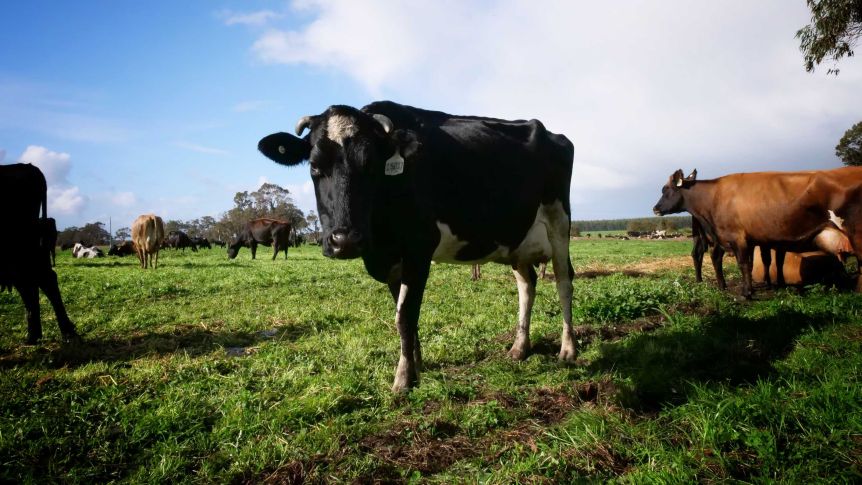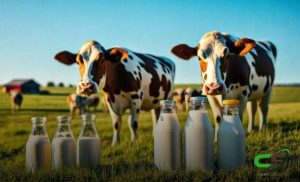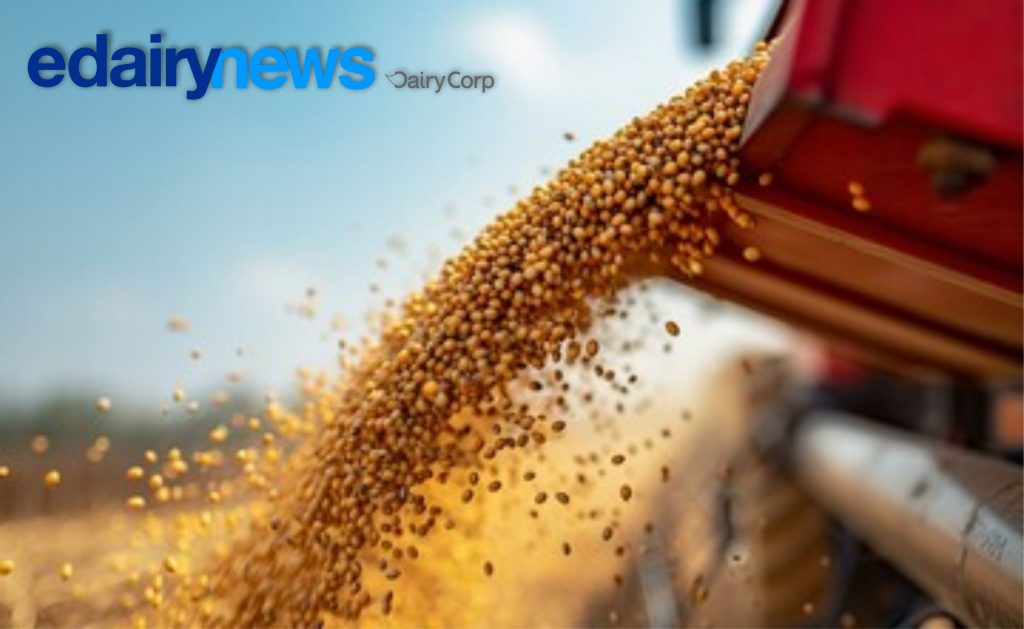Key points:
WA dairy processor Brownes has resumed cheese production for the first time in 14 years
Brownes mothballed its Brunswick plant in 2006
Industry players say the investment is welcome but won’t be enough to save the struggling sector
Chinese-owned company Brownes is one of three processors operating in WA and on Wednesday announced plans to produce up to 800 tonnes of cheddar cheese annually from late August.
It is the first time the processor has manufactured the product in WA since mothballing its Brunswick plant, based about 160 kilometres south-west of Perth, in 2006.
“WA is to be able to finally offer a sustainable long category where we can put excess milk from the state into cheese,” Brownes spokeswoman Natalie Sarich-Dayton said.
“WA has always been challenged by not having a product where we can put excess milk into so that’s a massive advantage for the WA dairy industry.”
Thousands of tonnes imported from interstate
The WA dairy sector predominantly services the fresh milk market, producing about 374 million litres last year, accounting for just 4.3 per cent of national production.
There are only around 150 dairy farmers left in WA, following an exodus from the industry due to rising production costs and unsustainable farm gate prices.
According to Brownes about 15,000 tonnes of cheese is imported from interstate and overseas every year.
WAFarmers dairy section president Michael Partridge said Brownes’ decision to resume cheese production was a positive step forward, but it wouldn’t fix long-term systemic issues plaguing the industry.
“It gives the industry a bit of opportunity for growth and adds some diversity because it will mean better utilisation of spring milk,” he said.
“The fresh market requires a stable supply curve throughout the year, whereas cheese production can use more winter milk in a longer life product that can be sold on a year-round basis.
“It also means WA consumers will be able to buy WA produced cheese from our farms which is good.
“But at the end of the day it’s not going to be a solution for the state’s dairy industry in terms of the power imbalance of market power with the retailers, but it is a step forward.”
‘It gives us confidence’
Scott River farmer, Ross Woodhouse, supplies about 19 million litres of fresh milk to Brownes annually.
He said the company’s decision to resume cheese production was ‘exciting’ and would reduce the industry’s carbon footprint.
“Any cheese produced and sold locally adds another market, creates another opportunity and doesn’t burn carbon to feed people because we’re not importing product,” he said.
“As suppliers it gives us confidence that they’re [Brownes] are building a robust business model.
“They wouldn’t have invested money into the plant on a whim … they obviously see the market opportunity.
“If other the other processors Harvey Fresh and Lion have surplus milk in the Spring they may be able to sell it Brownes to produce more cheese.”
An important tool
The state’s geographical isolation, small-scale production and lack of export capacity, has meant industry is constrained to demand for fresh product from the WA market.
Industry consultant Steven Hossen said cheese production would be an important tool for Brownes to manage the so-called spring flush during October and November.
“Despite the work that farmers have done to flatten out the supply curve and try produce more milk during the difficult months during summer as they are in peak months, we still have about 25 per cent more milk in the state in September than we have in February,” he said.
“It’s difficult because the state has transitioned to being immediate use products i.e. drinking milk, flavoured milk, etc.
“What traditionally happened was that cheese, butter or powder was produced to help manage supply and demand 20 years ago.
“All of those plants have closed and its lead to an unstable market position especially in the spring.”
Useful but not enough to save struggling sector
Mr Hossen said it was excellent to see a processor invest in processing capacity, but it would only account for a fraction of the state’s production.
“It’s very good for their suppliers — it means less pressure on them to flatten their supply, and it doesn’t come without costs to Brownes,” he said.
“There are no downsides to this, but in reality 800 tonnes annually is not that much.
“It takes about 10 litres of milk to produce a kilo of cheese.
“Eight hundred tonnes of production is about 8 million litres of milk — and that’s about 2 per cent of total production — so it’s useful but nobody is going to write home about it.”













